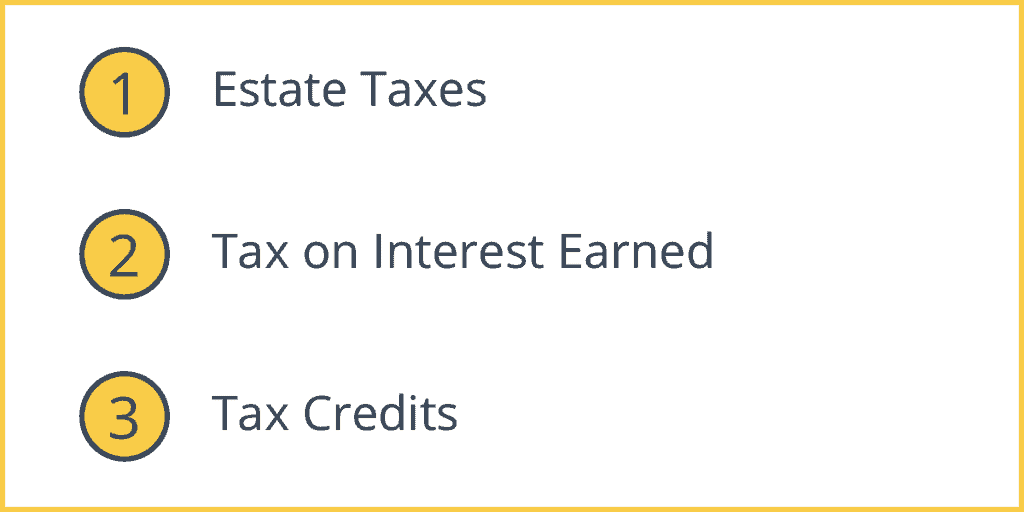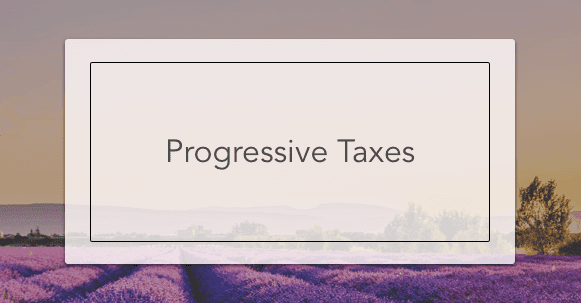A progressive tax involves taxing lower-income citizens at a lower rate than higher-income citizens. As a member of a society with a progressive tax, the tax rate you are placed in is based on your income—whether you can afford to pay a certain tax level. Higher-income earners have a greater percentage of their wealth and income taxed.
A progressive income tax is imposed because low-income families spend a much greater share of their income on basic necessities—cost of living expenses—than do rich people, who nearly always spend more of their income on luxuries, have no trouble affording their cost of living expenses, and therefore it’s only just to tax them more heavily.
For instance, the lowest bracket (range of incomes) could be taxed at 0%; the highest bracket—say, the fifth bracket—could be taxed at a rate of 70% or even higher.
The Advantages of a Progressive Tax
There are numerous advantages to having a progressive tax, both for individuals and for society as a whole. These include the following:
- Overall tax revenue is significantly higher than with something like a regressive tax rate, which is the direct opposite of a progressive tax rate (which takes a greater percentage from the poor than from the rich). This means that the government can invest more money into creating a better society for all members.
- Increase government revenue allows the government to create a social safety net for more marginalized members of the society, reducing suffering and increasing total welfare.
- Put simply, a progressive tax system is just: the people who are most financially well-off are burdened with the highest taxes.
- It reduces total economic inequality in society. Low economic inequality is associated with stronger democracy and greater economic growth.
The Disadvantages of a Progressive Tax
Some individuals—especially the most wealthy members of society—disagree with the idea of a progressive tax. They say that it reduces incentives to earn money through business activity. Likewise, they claim that it minimizes investment activity because the wealthy have left disposable income to invest.
Those who are critical of welfare programs—in the United States, these include Medicaid, SNAP (Supplemental Nutrition Assistance Program also known as food stamps), Housing Assistance, and more—are concerned that the increased tax revenue offered by a progressive tax just leads to increased government investment in such programs.
How Progressive Taxes Affect the Economy
Progressive taxes typically lead to income redistribution that allows poor and low-income people and communities to meet their basic needs. This is because the government ends up spending the money that they taxed more highly from the wealthy on services that the poor require (see examples in the previous section).
Progressive taxes also result in higher economic demand, because low-income people have more purchasing power to use on everyday necessities. This spurs economic growth and reduces unemployment, as people are less likely to be fired due to a lack of demand. Specifically, for each dollar spent using SNAP, $1.73 in demand is stimulated. Meanwhile, when the rich experience tax breaks, every dollar of revenue that’s lost as a result creates just 33 cents of demand. This demonstrates that progressive taxes help the economy.
Progressive Tax Examples

Here are a few examples of highly prevalent progressive taxes:
1. Estate Taxes
If the deceased person’s estate is worth more than a particular total that the government has chosen, only then is the person receiving the inheritance taxed.
2. Tax on Interest Earned
Anyone who can afford to have savings or investments, and thus interest earned from these, are taxed because they are clearly able to afford the tax.
3. Tax Credits
Low-income people, elderly people, and other vulnerable groups receive tax benefits, perks, and credits that help them to save money.

